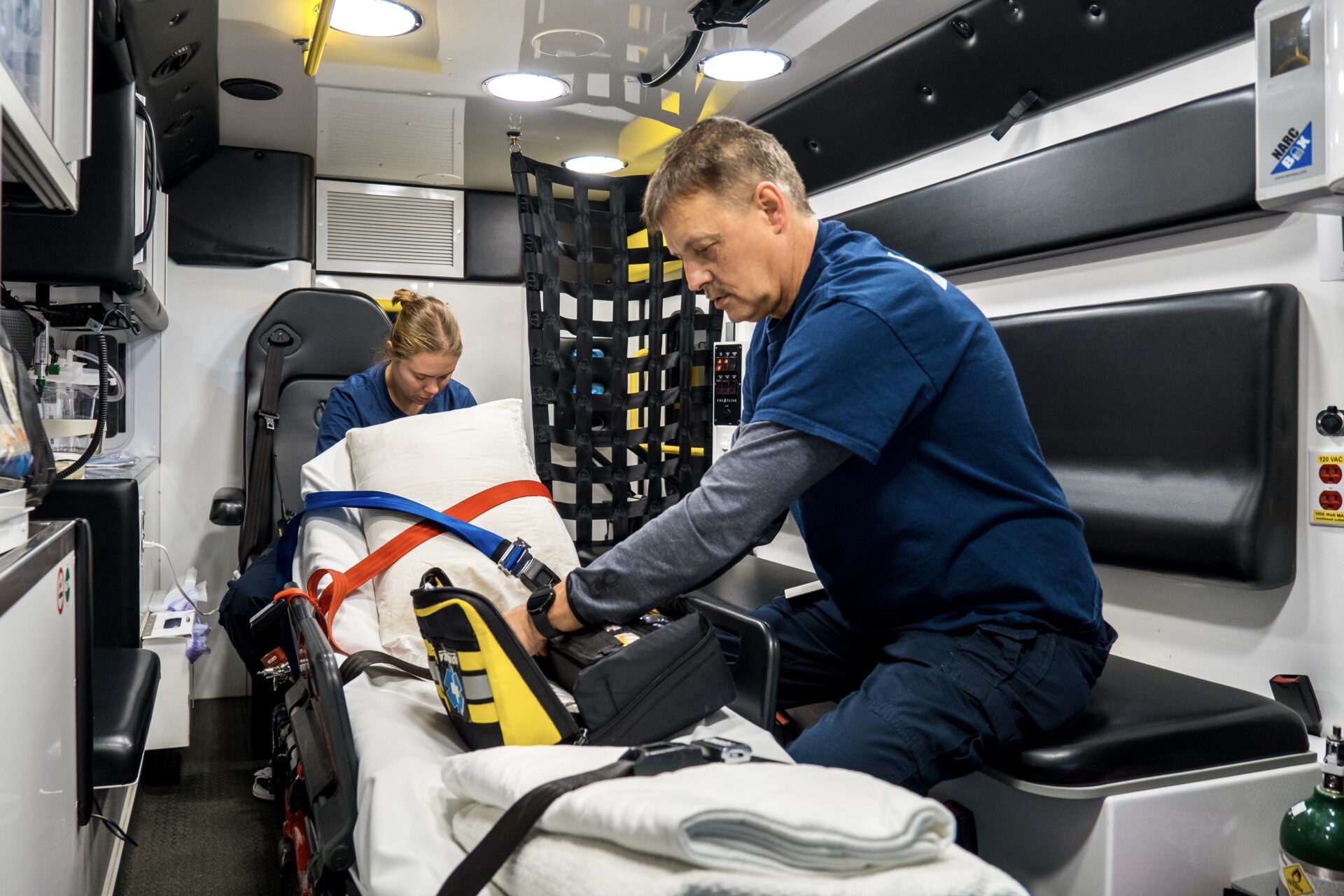Emergency Medical Technician (EMT)
Emergency Medical Technicians provide out of hospital emergency medical care and transportation for critical and emergent patients who access the emergency medical services (EMS) system. EMTs have the basic knowledge and skills necessary to stabilize and safely transport patients ranging from non-emergency and routine medical transports to life threatening emergencies. Emergency Medical Technicians function as part of a comprehensive EMS response system, under medical oversight. Emergency Medical Technicians perform interventions with the basic equipment typically found on an ambulance. Emergency Medical Technicians are a critical link between the scene of an emergency and the health care system.
[From the: National EMS Scope of Practice Model]
What does an EMT do?
The Emergency Medical Technician’s scope of practice includes basic skills focused on the acute management and transportation of critical and emergent patients. This may
occur at an emergency scene until transportation resources arrive, from an emergency scene to a health care facility, between health care facilities, or in other health care
settings. In many communities Emergency Medical Technicians provide a large portion of the out-of-hospital care. In some jurisdictions, especially rural areas, Emergency Medical Technicians provide the highest level of out-of-hospital care. Emergency Medical Technicians work alongside other EMS and health care professionals as an integral part of the emergency care team. Emergency Medical Technicians’ scope of practice includes basic, non-invasive interventions to reduce the morbidity and mortality associated with acute out-of-hospital medical and traumatic emergencies. Emergency care is based on assessment findings.
In many communities Emergency Medical Technicians provide a large portion of the out-of-hospital care. In some jurisdictions, especially rural areas, Emergency Medical Technicians provide the highest level of out-of-hospital care. Emergency Medical Technicians work alongside other EMS and health care professionals as an integral part of the emergency care team. Emergency Medical Technicians’ scope of practice includes basic, non-invasive interventions to reduce the morbidity and mortality associated with acute out-of-hospital medical and traumatic emergencies. Emergency care is based on assessment findings.
How to obtain your Emergency Medical Technician (EMT) certification?
All aspiring EMTs muct complete a state-approved education course for Emergency Medical Technicians. Pass the course, high-fidelity scenario skills and NREMT written exam. Students must pass a background check. Our courses provide hands-on-learning, lecture material in-person or online. AHA CPR basic is included in the courses.
Classes are usually attended 2 times per week for 4 hours. Our courses typically last 160 hours, including CPR, HAZMAR and MCI training.
How to sign-up for the course?
There are several options availabe through LifeSigns Plus. We offer the traditional in-person course that can be scheduled for organizations and individuals who want to train as a group. We have an EMT Fast Track couse that is 4 evening a week over 5 weeks plus online lecture, quiz and exams. We typically host the EMT Fast Track course twice a year. January through February or June through July. LifeSigns Plus' goal is to accomodate to fit the needs of the student. Please contact info@lifesignsplus.com for more information, next class and pricing. You can, also visit our upcoming training courses here.
Additional Options:
LifeSigns Plus been given the opportunity to team up with Sanford Health EMS Education, Fargo, ND to offer a grant program for individuals in the area that are interested in obtaining their EMT and working in the area. Sanford Health EMS Education provides the course, live online lecture and course materials. This grant is designed for rural EMS and LifeSigns Plus, in Bemidji, provides the in-person skills during the course. This program happens 2 times a year as long as the grant is available. This course is in conjunction with NDSCS of ND. Courses typically start at the end of August for a semester, ending in the middle of December. The second course is Spring semester and typically runs from January to May. Please click on the link below for more information, learn more about filling out an application and eligibility.
